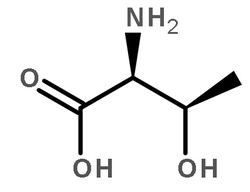A collective form of cell death requires homeodomain interacting protein kinase.
Nichole Link, Po Chen, Wan-Jin Lu, Kristi Pogue, Amy Chuong, Miguel Mata, Joshua Checketts, John M Abrams
Index: J. Cell Biol. 178(4) , 567-74, (2007)
Full Text: HTML
Abstract
We examined post-eclosion elimination of the Drosophila wing epithelium in vivo where collective "suicide waves" promote sudden, coordinated death of epithelial sheets without a final engulfment step. Like apoptosis in earlier developmental stages, this unique communal form of cell death is controlled through the apoptosome proteins, Dronc and Dark, together with the IAP antagonists, Reaper, Grim, and Hid. Genetic lesions in these pathways caused intervein epithelial cells to persist, prompting a characteristic late-onset blemishing phenotype throughout the wing blade. We leveraged this phenotype in mosaic animals to discover relevant genes and establish here that homeodomain interacting protein kinase (HIPK) is required for collective death of the wing epithelium. Extra cells also persisted in other tissues, establishing a more generalized requirement for HIPK in the regulation of cell death and cell numbers.
Related Compounds
| Structure | Name/CAS No. | Molecular Formula | Articles |
|---|---|---|---|
 |
Protein serine/threonine kinase
CAS:9026-43-1 |
C4H9NO3 |
|
Expression and localization of five members of the testis-sp...
2011-01-01 [Mol. Hum. Reprod. 17(1) , 42-56, (2011)] |
|
Hipk is an essential protein that promotes Notch signal tran...
2009-01-01 [Dev. Biol. 325(1) , 263-72, (2009)] |
|
Drosophila Smt3 negatively regulates JNK signaling through s...
2011-06-01 [Development 138(12) , 2477-85, (2011)] |
|
CIPK9: a calcium sensor-interacting protein kinase required ...
2007-05-01 [Cell Res. 17(5) , 411-21, (2007)] |
|
Tubulin binds to the cytoplasmic loop of TRESK background K⁺...
2014-01-01 [PLoS ONE 9(5) , e97854, (2014)] |